Family : Acanthuridae

Text © Giuseppe Mazza

English translation by Mario Beltramini
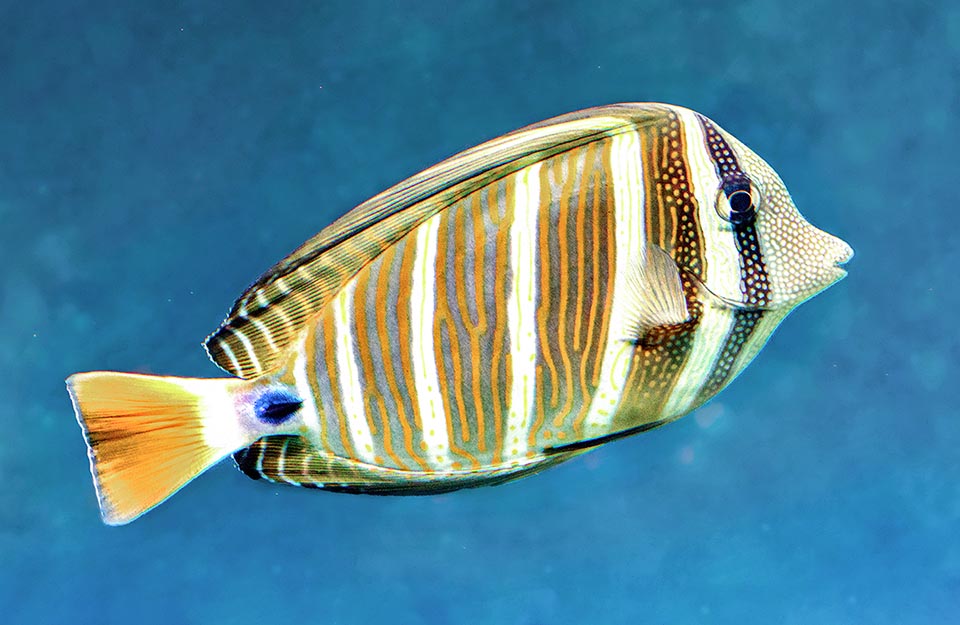
The Sailfin tang (Zebrasoma velifer) is present in the Indo-Pacific tropical waters up to Hawaii and the Tuamotu Islands and Pitcairn © Giuseppe Mazza
The Sailfin tang (Zebrasoma velifer Bloch, 1795), belongs to the class of the Actinopterygii, the ray-finned fishes, to the order of the Perciformes and to the family of the Acanthuridae.
The name of the genus Zebrasoma originates from “zebra”, the Latin name of the well known African equine, and from the Greek “soma”, body; that is, it evokes an animal “with the zebra-striped body”, due to the unusually vertical bands in a surgeonfish.
The specific name velifer, from the Latin “velum”, sail, and “fero”, to bring, adds that it is a fish “bearing the sail”, due to the dorsal and anal fins of this fish that may extend in the manner of sails, like in the similar Zebrasoma desjardinii.
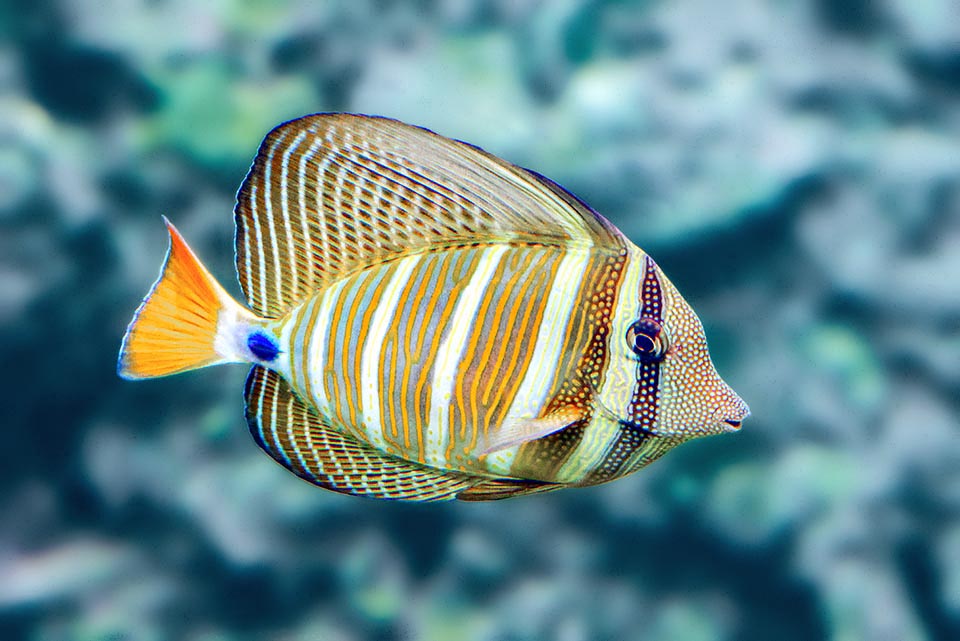
It’s one of the few vertically banded surgeonfishes. The typical sharp blade is evidenced in blue on the caudal peduncle: a clear aposematic warning for the predators © Giuseppe Mazza
Zoogeography
Zebrasoma velifer is present in the tropical waters of the Indian Ocean, more or less in the same environments of the Zebrasoma desjardinii, and also in the Pacific, from Indonesia to Hawaii and to the islands Tuamotu and Pitcairn. As northern limit it has Japan, and, south, New Caledonia and Easter Island. It seems that it is present also in Florida, because of an ill-advised liberation maybe due to the luxury cruising yachts often equipped with marine aquaria with exotic ornamental fishes.
Ecology-Habitat
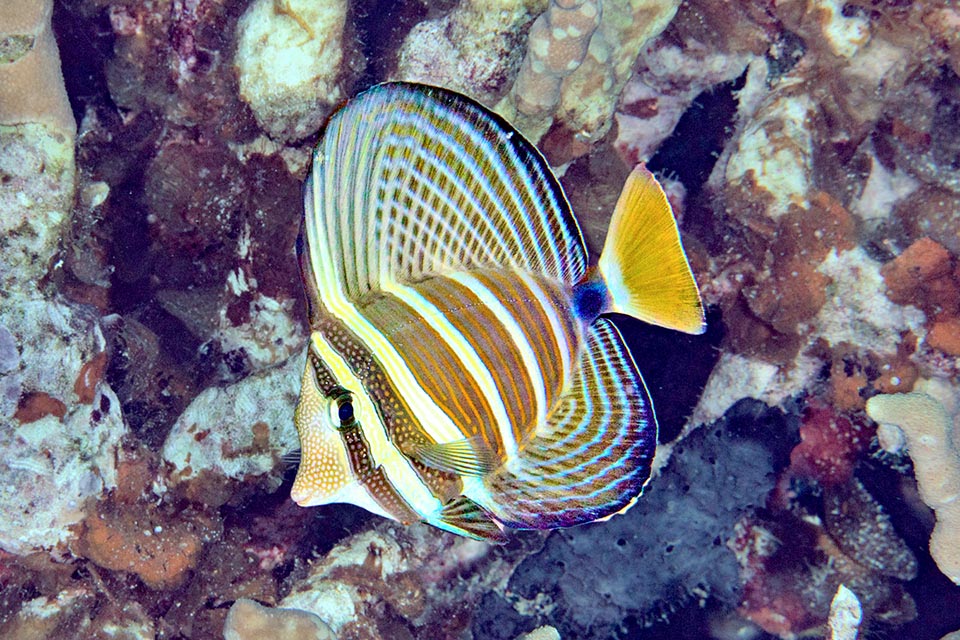
More, it may immediately double its own size spreading dorsal and anal fins to frighten importunate or for fleeing quickly while these ones are thinking © Mark Rosenstein
It lives in the madreporic formations or where there are rocks rich in algae, exploring the seabed in shallow waters, even murky, up to a maximum of 30 m of depth.
Morphophysiology
It may reach 40 cm, but the normal size is about 30 cm. The body is flat, more or less oval or roundish when the fins are extended. The dorsal fin has 4-5 spiny rays and 29-33 soft; the anal 3 spiny rays and 23-26 soft; the ventral are of a very modest size; the pectoral ones coun 23-26 unarmed rays; the caudal is blunt.
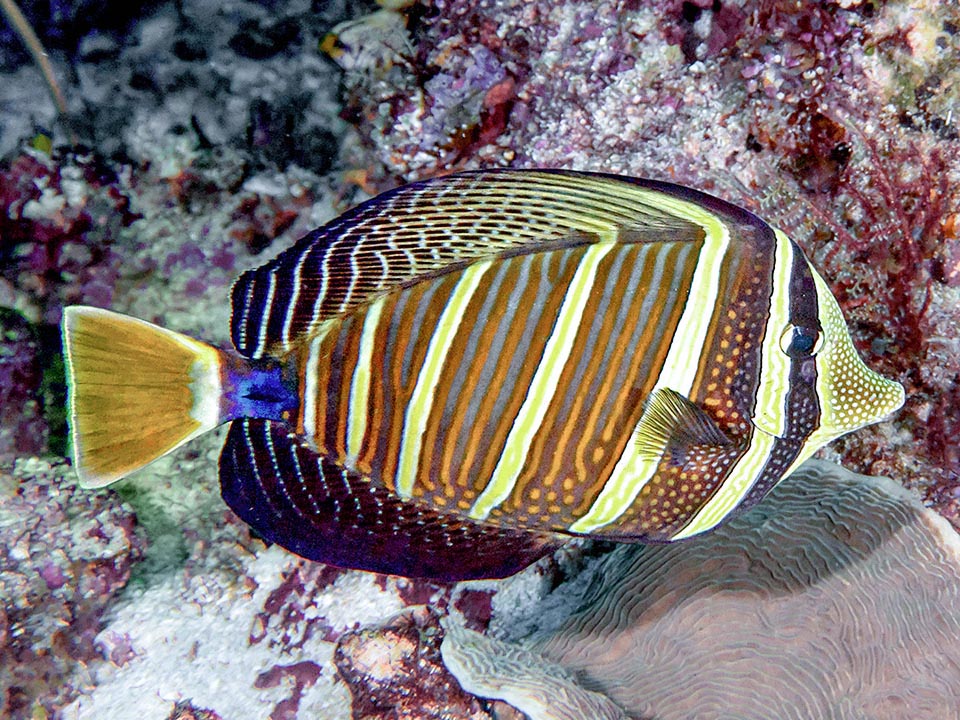
Zebrasoma velifer teeth are bigger than the other Zebrasoma because grazes all day eating phanerogams and leafy macroalgae © Rickard Zerpe
The caudal peduncle has the sharp blade typical to the surgeonfishes, evidenced on both sides by a showy blue dot. A warning for the importunate, even if it is not venomous.
The mouth has teeth relatively bigger than the other Zebrasoma, because this is a fish that feeds on leafy algae.
The body displays 6 wide vertical bands. The first, darker, crosses the eye and is studded by numerous white dots, present also in the fore part of the snout. The second, close to the dots that turn yellow-orange, fades in lighter tones and already shows some vertical orange-yellow lines that replace or precede the alignment of the dots.
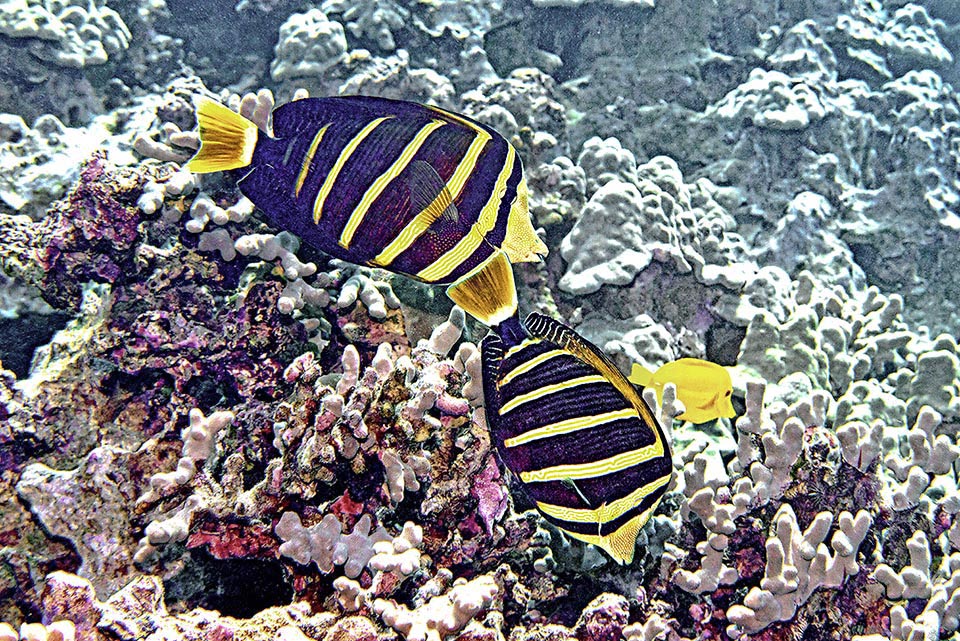
Reproduction is not collective but happens swimming in pairs. Eggs and larvae are given entrusted to the currents © Brian Cole
The other four vertical bands contain only lines of this colour, more or less bifurcated with punctuation decreasing downwards, on a dark brown or bluish grey background.
The caudal fin begins white but immediately turns orange, and ends with a blue light edge. Also the sail fins have numerous yellow-orange stripes. They are concentric and parallel to the edge, visible only when they are completely extended.
Ethology-Reproductive Biology
The Sailfin tang lives alone or in pairs.
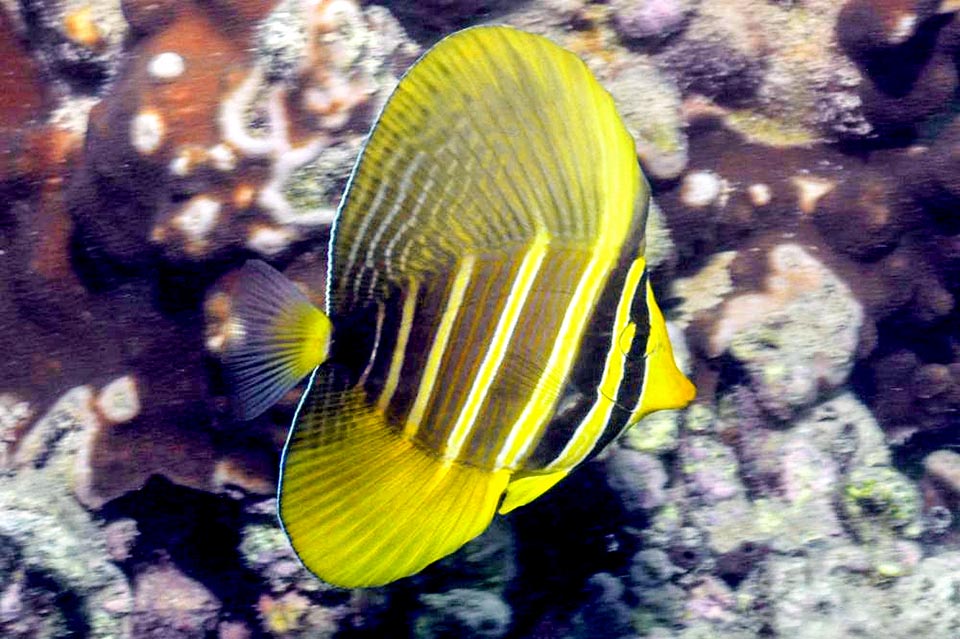
Juveniles grow sheltered by madrepores and have a simplified livery with yellow and black bands © Rick Stuart-Smith, Reef Life Survey
It goes swimming the whole day looking for algae it eats, and when it feels to be threatened it spreads, like Zebrasoma desjardinii, the dorsal and the anal fins thus immediately doubling its size. A way to impress the competitors or to gain some time and flee.
It reproduces in pairs with pelagic eggs entrusted to the currents. The juveniles have a simplified livery with vertical yellow and black bands. Resilience is good, with a possible doubling of the populations in 1,4-4,4 years, and the fishing vulnerability index, moderate, marks 37 on a scale of 100. Zebrasoma velifer appears in the IUCN Red List of the endangered species as “Least Concern”.
Synonyms
Acanthurus velifer Bloch, 1795; Zebrasoma veliferum Bloch, 1795.
→ For general information about FISH please click here.
→ For general information about BONY FISH please click here
→ For general information about CARTILAGINOUS FISH please click here.
→ To appreciate the BIODIVERSITY of BONY FISH please click here.
→ To appreciate the BIODIVERSITY of CARTILAGINOUS FISH please click here.
